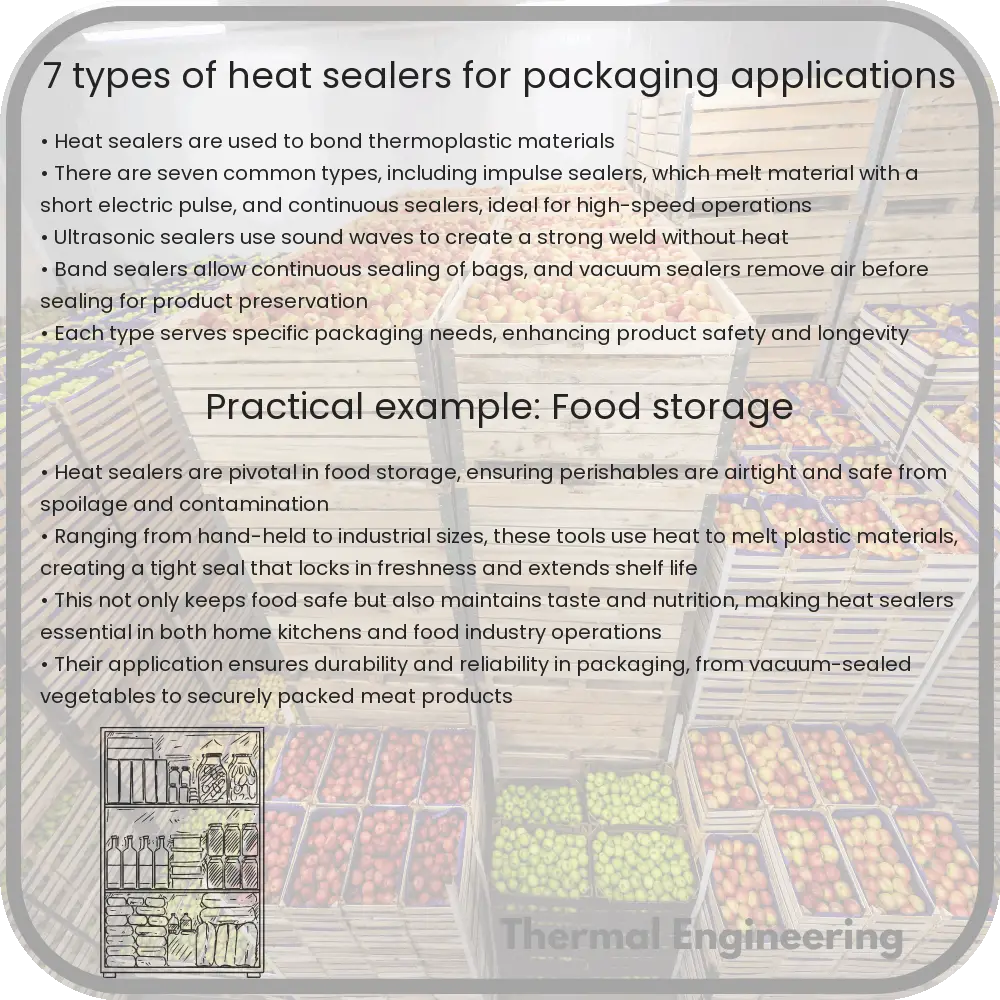Learn about the different types of heat sealers used in packaging applications to seal plastics and other materials efficiently.

Understanding the Different Types of Heat Sealers for Packaging Applications
Heat sealers are essential tools in the packaging industry, used to seal various types of packaging materials, primarily plastics. They work by applying heat and pressure to melt the plastic, thereby creating airtight seals that prevent the contents from exposure to air, moisture, and contaminants. There are several types of heat sealers available, each suited for different packaging needs and materials. Here, we explore seven common types of heat sealers used in packaging applications.
1. Impulse Heat Sealers
Impulse heat sealers are one of the most popular types of sealers used for lightweight and medium-weight materials like polyethylene and polypropylene bags. These devices heat up only when the sealing arm is lowered onto the bag, which helps save energy. The sealer delivers a quick impulse of heat, melts the plastic together, and then cools down immediately, making it ideal for low to moderate volume packaging operations.
2. Continuous Band Sealers
Continuous band sealers are ideal for sealing thermoplastic materials at high speeds, which makes them suitable for high-volume packaging operations. These machines continuously move the bag through a conveyor system where it is sealed by heating elements. They can handle various bag sizes and are often used in industries such as food, agriculture, and pharmaceuticals.
3. Hand Sealers
Hand sealers are manually operated and are great for small-scale or occasional sealing tasks. They are portable, affordable, and simple to use, requiring the operator to press the sealing arm against the bag. Hand sealers are typically used for poly bags and are popular in small businesses and residential settings.
4. Foot Sealers
Foot sealers allow the operator to keep both hands free to handle the product being sealed, which can enhance productivity. These devices are operated by a foot pedal, providing better control and support, especially for heavy or large packages. They are commonly used in mid- to high-volume applications.
5. Automatic Sealers
Automatic sealers are designed for continuous, high-efficiency operations where minimal human intervention is desired. These machines automatically feed the material, seal it, and sometimes even trim the excess plastic. They are perfect for industries requiring consistent, high-speed sealing such as food packaging and electronics.
6. Vacuum Sealers
Vacuum sealers not only seal bags but also remove the air inside them prior to sealing. This process extends the shelf life of food products and protects sensitive components from atmospheric damage in industrial applications. Vacuum sealers typically require specific types of vacuum bags but are essential for preserving perishable goods.
7. Specialty Sealers
This category includes a variety of sealers designed for specific materials or applications, such as medical pouch sealers or sealers for heavy-duty laminates. Specialty sealers often meet precise industry standards and regulations, ensuring that packaging is compliant and secure for sensitive or hazardous materials.
In conclusion, choosing the right type of heat sealer depends on your specific needs, including the type of material being sealed, the speed of operations, and the scale of production. Whether for individual use, small businesses, or industrial applications, there’s a heat sealer designed to meet the challenge effectively and efficiently.